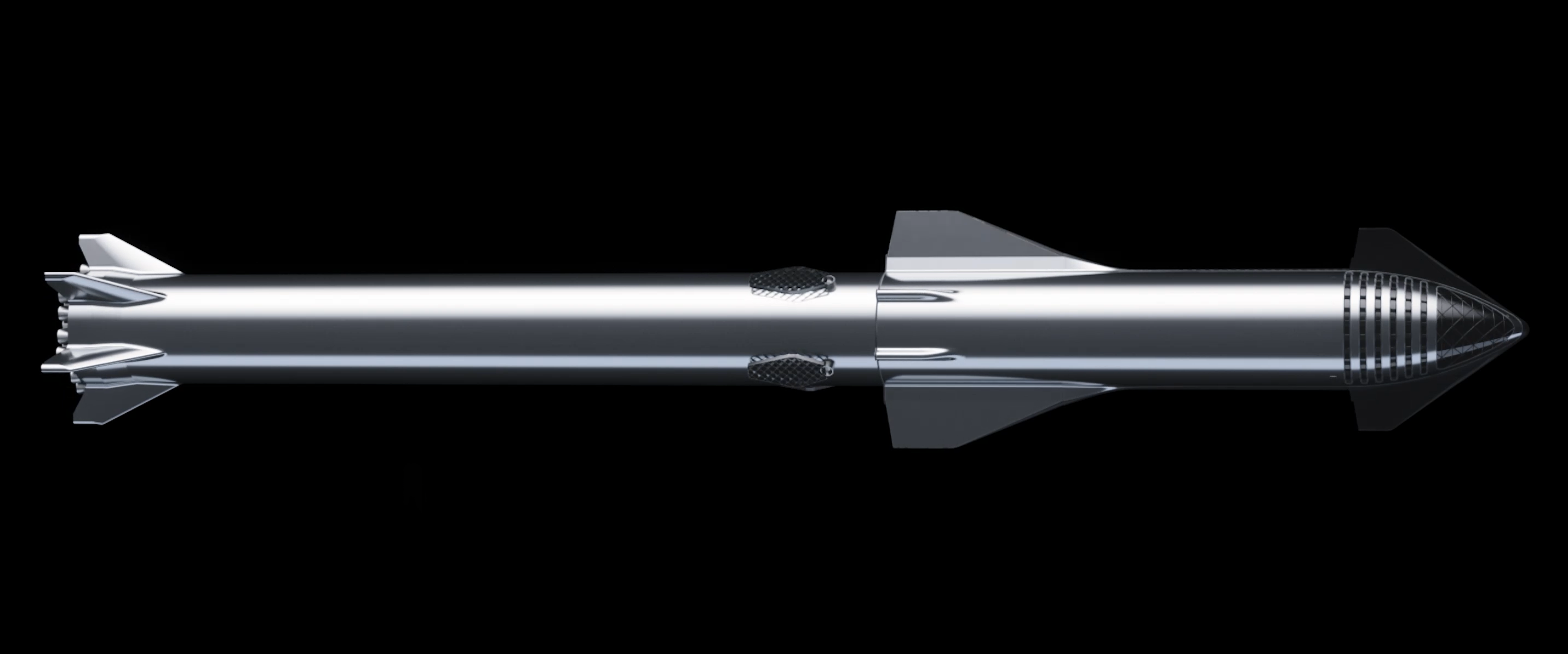
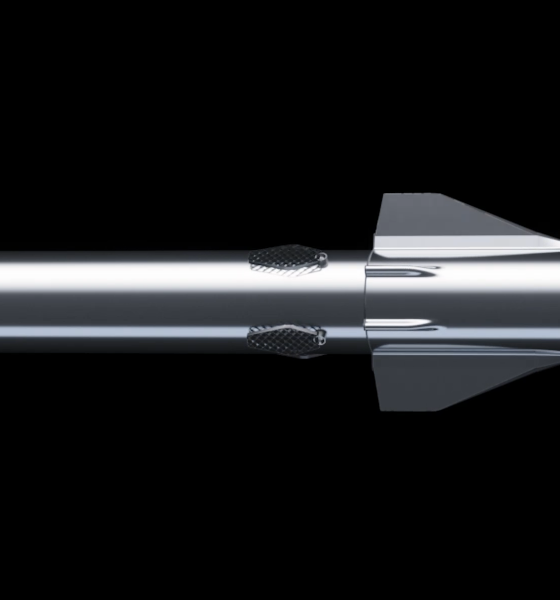
News
SpaceX is halfway done building the world’s largest rocket booster
New photos of the SpaceX Starship program’s first Super Heavy confirm that the booster prototype – known as Booster Number 1 (BN1) and set to become the largest rocket booster ever built – is already halfway complete.
Set to be the world’s tallest, heaviest, and most powerful liquid rocket booster ever built, Super Heavy is expected to measure some 70 meters (~230 ft) tip to tail, weigh ~3700 metric tons fully fueled, and produce around 7500 metric tons (16.5 million lbf) of thrust at liftoff. Starship, the reusable upper stage and spacecraft SpaceX is busy prototyping and testing, is 40% shorter than Super Heavy and features less than a quarter as many Raptor engines, producing thrust roughly equivalent to Falcon 9’s first stage.

Super Heavy will be equivalent to almost ten Falcon 9s at full thrust and outclass every rocket ever built. However, the basic design of the booster is effectively the same as any other liquid-fueled rocket, opting for a tall and thin Falcon-style cylinder with a high aspect ratio and no exterior coating – just bare metal.
Super Heavy’s airframe is made up of two main propellant tanks joined by a “common dome” and capped at both ends with an interstage (the structure that mates the booster to Starship) and engine/skirt section (encloses the thrust dome, supports landing legs, and houses umbilical ports).

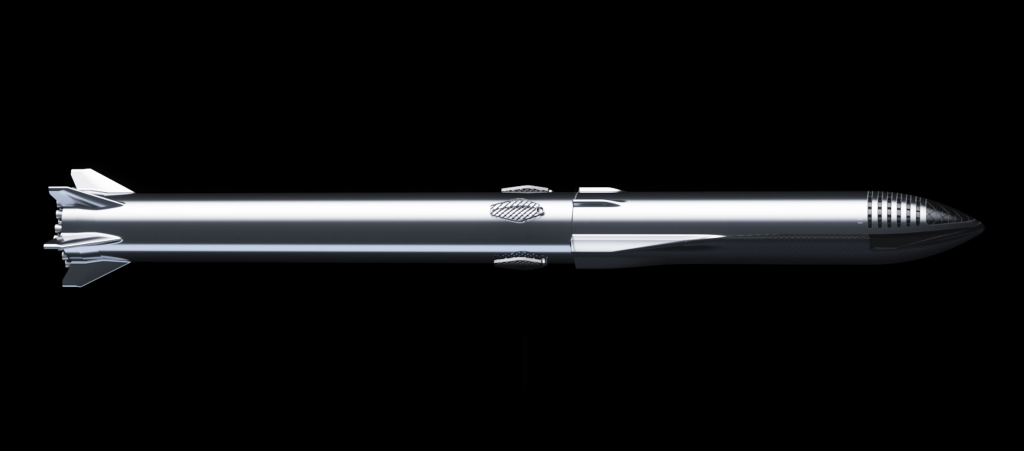
While Super Heavy is dramatically different from Starship by almost any measure, SpaceX has ensured that hardware commonality is as extensive as possible. Ultimately, with minor tweaks, that means that SpaceX can (in theory) build Super Heavy with the exact same tools and techniques it’s used to churn out Starship prototypes.
As of the end of this month, a flurry of public photos from local (and visiting) photographers have confirmed that Super Heavy booster BN1 is effectively halfway to completion and currently stands 18 steel rings tall. Aside from booster-specific layout changes, that 33-meter-tall (~105 ft) barrel section is virtually identical to a Starship’s 20-ring barrel section, lacking only conical nose section that caps them off.
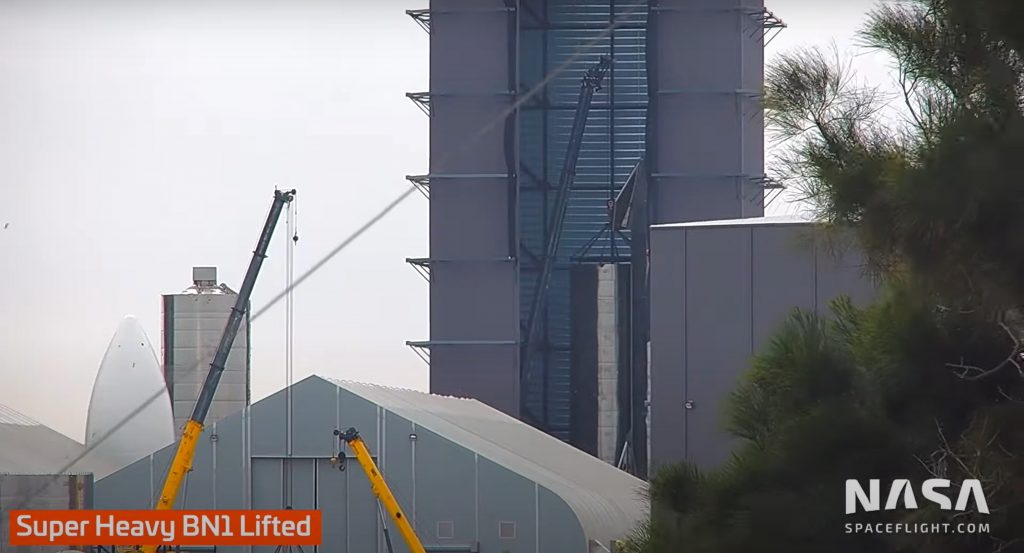
The 18-ring stack also guarantees that the current assembly is Super Heavy BN1’s liquid oxygen (LOx) tank and confirms that like ITS, BFR, Falcon 9, and other SpaceX rockets, Super Heavy’s LOx tank will sit above its fuel (methane) tank. Likely either 38 or 39 rings tall overall, it also indicates that BN1 is a ring away from half of its full height, leaving the integration of its strengthened methane tank, custom engine section, and skirt as the last major tasks standing between SpaceX and its first Super Heavy prototype.
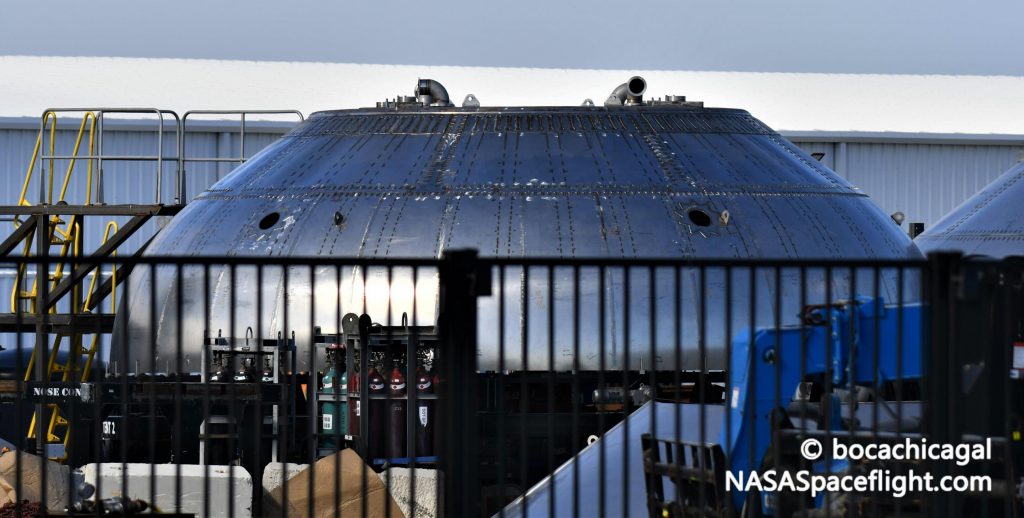

According to Elon Musk, SpaceX will likely hop BN1 if or when it passes initial cryogenic proof and static fire testing. If that goes according to plan, it’s unclear if BN1 can be converted for two-stage Starship launch attempts or if SpaceX will simply move on to BN2 (already under construction).

Elon Musk
Elon Musk and Tesla AI Director share insights after empty driver seat Robotaxi rides
The executives’ unoccupied tests hint at the rapid progress of Tesla’s unsupervised Robotaxi efforts.

Tesla CEO Elon Musk and AI Director Ashok Elluswamy celebrated Christmas Eve by sharing personal experiences with Robotaxi vehicles that had no safety monitor or occupant in the driver’s seat. Musk described the system’s “perfect driving” around Austin, while Elluswamy posted video from the back seat, calling it “an amazing experience.”
The executives’ unoccupied tests hint at the rapid progress of Tesla’s unsupervised Robotaxi efforts.
Elon and Ashok’s firsthand Robotaxi insights
Prior to Musk and the Tesla AI Director’s posts, sightings of unmanned Teslas navigating public roads were widely shared on social media. One such vehicle was spotted in Austin, Texas, which Elon Musk acknowleged by stating that “Testing is underway with no occupants in the car.”
Based on his Christmas Eve post, Musk seemed to have tested an unmanned Tesla himself. “A Tesla with no safety monitor in the car and me sitting in the passenger seat took me all around Austin on Sunday with perfect driving,” Musk wrote in his post.
Elluswamy responded with a 2-minute video showing himself in the rear of an unmanned Tesla. The video featured the vehicle’s empty front seats, as well as its smooth handling through real-world traffic. He captioned his video with the words, “It’s an amazing experience!”
Towards Unsupervised operations
During an xAI Hackathon earlier this month, Elon Musk mentioned that Tesla owed be removing Safety Monitors from its Robotaxis in Austin in just three weeks. “Unsupervised is pretty much solved at this point. So there will be Tesla Robotaxis operating in Austin with no one in them. Not even anyone in the passenger seat in about three weeks,” he said. Musk echoed similar estimates at the 2025 Annual Shareholder Meeting and the Q3 2025 earnings call.
Considering the insights that were posted Musk and Elluswamy, it does appear that Tesla is working hard towards operating its Robotaxis with no safety monitors. This is quite impressive considering that the service was launched just earlier this year.
Elon Musk
Starlink passes 9 million active customers just weeks after hitting 8 million
The milestone highlights the accelerating growth of Starlink, which has now been adding over 20,000 new users per day.

SpaceX’s Starlink satellite internet service has continued its rapid global expansion, surpassing 9 million active customers just weeks after crossing the 8 million mark.
The milestone highlights the accelerating growth of Starlink, which has now been adding over 20,000 new users per day.
9 million customers
In a post on X, SpaceX stated that Starlink now serves over 9 million active users across 155 countries, territories, and markets. The company reached 8 million customers in early November, meaning it added roughly 1 million subscribers in under seven weeks, or about 21,275 new users on average per day.
“Starlink is connecting more than 9M active customers with high-speed internet across 155 countries, territories, and many other markets,” Starlink wrote in a post on its official X account. SpaceX President Gwynne Shotwell also celebrated the milestone on X. “A huge thank you to all of our customers and congrats to the Starlink team for such an incredible product,” she wrote.
That growth rate reflects both rising demand for broadband in underserved regions and Starlink’s expanding satellite constellation, which now includes more than 9,000 low-Earth-orbit satellites designed to deliver high-speed, low-latency internet worldwide.
Starlink’s momentum
Starlink’s momentum has been building up. SpaceX reported 4.6 million Starlink customers in December 2024, followed by 7 million by August 2025, and 8 million customers in November. Independent data also suggests Starlink usage is rising sharply, with Cloudflare reporting that global web traffic from Starlink users more than doubled in 2025, as noted in an Insider report.
Starlink’s momentum is increasingly tied to SpaceX’s broader financial outlook. Elon Musk has said the satellite network is “by far” the company’s largest revenue driver, and reports suggest SpaceX may be positioning itself for an initial public offering as soon as next year, with valuations estimated as high as $1.5 trillion. Musk has also suggested in the past that Starlink could have its own IPO in the future.
News
NVIDIA Director of Robotics: Tesla FSD v14 is the first AI to pass the “Physical Turing Test”
After testing FSD v14, Fan stated that his experience with FSD felt magical at first, but it soon started to feel like a routine.

NVIDIA Director of Robotics Jim Fan has praised Tesla’s Full Self-Driving (Supervised) v14 as the first AI to pass what he described as a “Physical Turing Test.”
After testing FSD v14, Fan stated that his experience with FSD felt magical at first, but it soon started to feel like a routine. And just like smartphones today, removing it now would “actively hurt.”
Jim Fan’s hands-on FSD v14 impressions
Fan, a leading researcher in embodied AI who is currently solving Physical AI at NVIDIA and spearheading the company’s Project GR00T initiative, noted that he actually was late to the Tesla game. He was, however, one of the first to try out FSD v14.
“I was very late to own a Tesla but among the earliest to try out FSD v14. It’s perhaps the first time I experience an AI that passes the Physical Turing Test: after a long day at work, you press a button, lay back, and couldn’t tell if a neural net or a human drove you home,” Fan wrote in a post on X.
Fan added: “Despite knowing exactly how robot learning works, I still find it magical watching the steering wheel turn by itself. First it feels surreal, next it becomes routine. Then, like the smartphone, taking it away actively hurts. This is how humanity gets rewired and glued to god-like technologies.”
The Physical Turing Test
The original Turing Test was conceived by Alan Turing in 1950, and it was aimed at determining if a machine could exhibit behavior that is equivalent to or indistinguishable from a human. By focusing on text-based conversations, the original Turing Test set a high bar for natural language processing and machine learning.
This test has been passed by today’s large language models. However, the capability to converse in a humanlike manner is a completely different challenge from performing real-world problem-solving or physical interactions. Thus, Fan introduced the Physical Turing Test, which challenges AI systems to demonstrate intelligence through physical actions.
Based on Fan’s comments, Tesla has demonstrated these intelligent physical actions with FSD v14. Elon Musk agreed with the NVIDIA executive, stating in a post on X that with FSD v14, “you can sense the sentience maturing.” Musk also praised Tesla AI, calling it the best “real-world AI” today.








